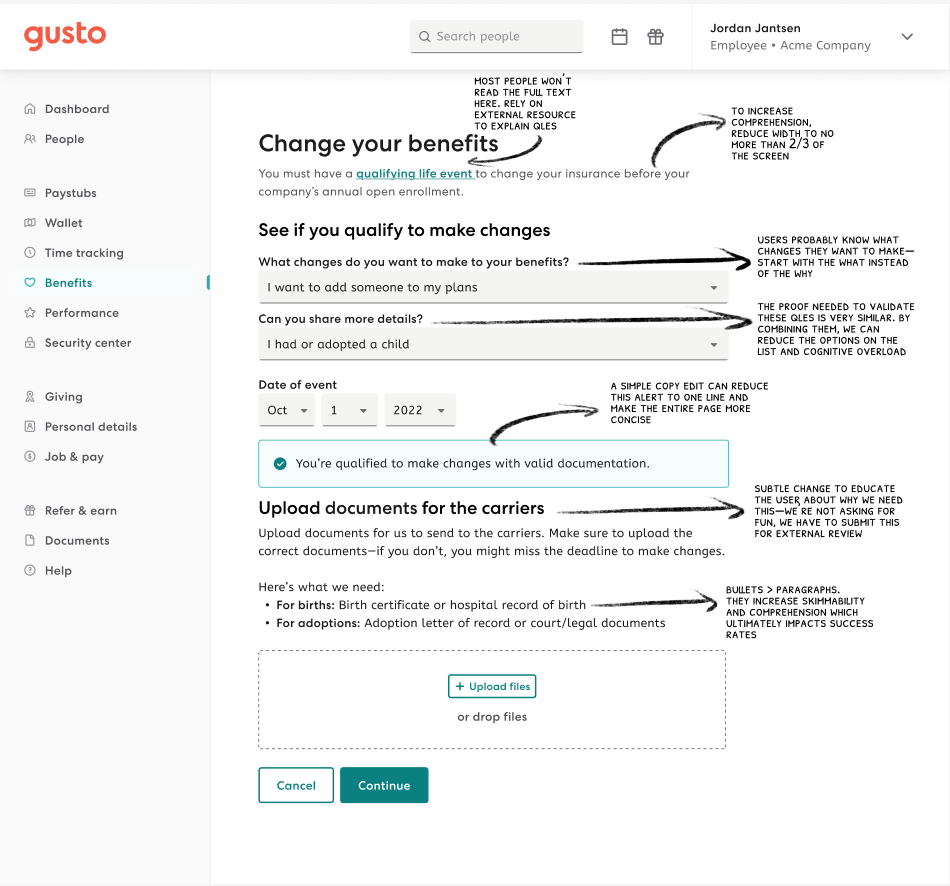Change coverage
Context
Health insurance is federally regulated, and you're only allowed to change your coverage if you have what's called a Qualifying Life Event (QLE). QLEs are a list of reasons the government will allow changes. If you aren't experiencing one, you can't make changes. Health insurance carriers don't just take your word for it—you have to provide evidence proving a legitimate QLE.
Problem
Not everyone knows all that...and who really wants to learn about it? Many people want to change their original enrollment choices—which you can't always do for the reasons explained above. The lack of knowledge and personal motivation to push through ineligible changes is high. The result: CX spends too much time explaining rules we as a company don't determine, which increases our cost-to-serve metrics and decreases our NPS—all for issues that can be Googled. We needed to redesign our current flow, ASAP
My approach: I did an audit of the existing flow and interviewed our CX team to understand the common pitfalls. Then I listed out the customer goals and the business goals to inform my recommendations.

My input
- Content strategy: We're not doing ourselves or the end user any favors in the first dropdown by offering a mix of intentions and events. We know that users don't have the list of QLEs memorized. Let's start with what they do know, and guide them toward whether or not it's an eligible reason to change insurance later. We're also surfacing info in the wrong moments, it's irrelevant to most users.
- UX writing: There are a lot of basic rules to UX writing that would help us simplify this page. I quickly found opportunities to:
- Reduce text
- Increase comprehension
- Use progressive disclosure to provide info relevant to the user
My role
I was the primary content designer, partnered with a UX designer.
Collaborators
- Product Manager
- Data
- CX and Operations teams
- UX Design
- Compliance
Final designs


